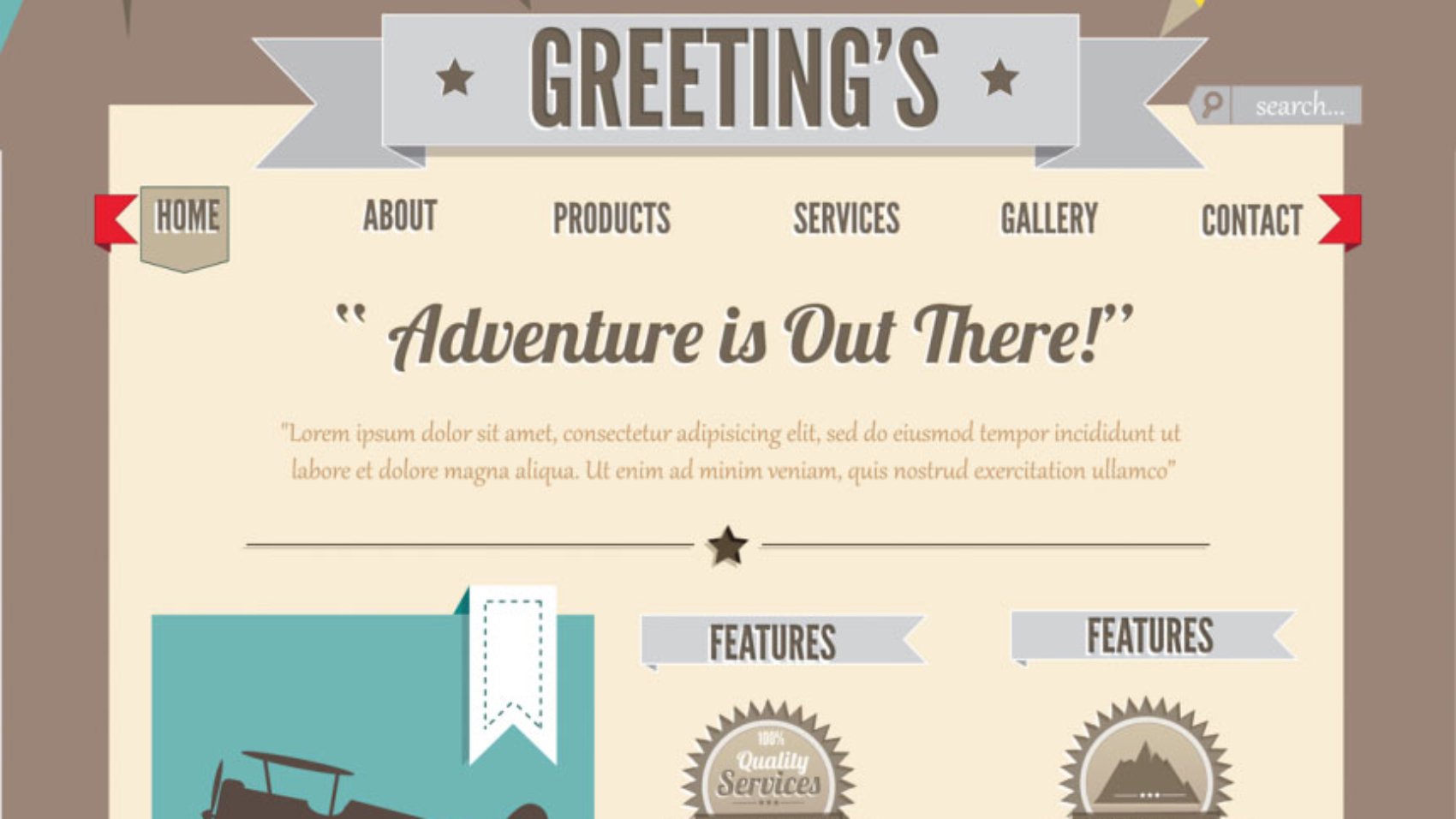A new decade encourages us to innovate and push the boundaries further than ever before. As a business, it’s time to consider what trends will be present for the year ahead and attempt to adopt these into your online advertising strategy.
In a world where consumers are paying less attention to advertising than ever before – according to this report by ad experience platform RevJet – it’s more important than ever that you’re creating online advertising that appeals. RevJet discovered that 73% of consumers dislike companies that put out repetitive messaging and 42% feel that the advertisements they see on digital media are irrelevant to their needs.
In this article, we’ve considered the upcoming online advertising trends and the opportunity around these to ensure what you create is well received in the year 2020.
What 2020 online advertising trends will we be considering?
- Contextual targeting
- Gen Z targeted advertising
- Alternatives to cookies in the pipeline
- IAB’s Gold Standard gaining momentum
- The return of creativity in display advertising
- In-house DCO with a CMP
1. Contextual targeting
Ensure you take time to consider contextual targeting and how to incorporate this into your online advertising for 2020. This type of targeting format gets your brand in front of consumers in a natural way, improving engagement and the potential for leads.
What is contextual targeting?
Contextual targeting, quite simply, improves your advertisement’s relevancy. It is a targeting strategy whereby your ad features depending on its suitability to a website or page.
Using contextual targeting your ad will display if it matches keywords, taxonomy topics, location or browsing habits – even sentimentality. Creating a personalised link between what you’re offering and what the consumer is potentially searching for.
It’s actually a very old and simple strategy. It is essentially placing the most appropriate ads within the right context. For example, iGaming betting ads on the sports pages of a news website.
Why should you be considering contextual targeting in 2020?
Contextual targeting offers a personal touch and improves your chances of achieving a conversion. Here are just a few of its benefits:
- Improved relevancy: Your ad will only be displayed on pages considered to be relevant to your product or service. This ensures you’re seen by those who are more likely to consider buying from you. And there is no confusion from those viewing the page regarding context.
- It will overcome Google’s future restriction of keyword targeting: Google plans to remove content identifiers and stop informing advertisers about the type of content their ads could be placed alongside. With contextual targeting, you won’t need to worry about this and still be present where it matters.
- Privacy friendly: Contextual targeting is privacy-friendly as your ad is displayed based on the content and keywords featured on a website – not the consumer. This is also helpful in terms of GDPR changes as it means while you continue to rebuild your all-important customer list, you are still able to get in front of the right people.
2. Gen Z targeted advertising
There’s been one, specific demographic on every marketer’s mind in recent years – millennials. We’ve been creating content and advertising for a long time now that appeals to their needs and sensibilities but a new breed of consumer is moving into the limelight. In 2020, expect to see a trend for advertising that attempts to capture Gen Z’s attention.
Who is Generation Z?
Gen Z is the up and coming demographic, now looking to make decisions when it comes to which brands they want to buy from. They fall between the ages of 7 and 24 years old, which means you’re targeting the latter and individuals who are starting to make more adult decisions and tackle those larger life milestones.
How do I target Gen Z with my online advertising?
There are few things to keep in mind when adopting a Gen Z focused approach:
- Mobile-first thinking is essential: When creating content for your site or advertising it’s important to put mobile usability first. Ensure everything you create works on mobile platforms, as Gen Z is more likely to be consuming online content via their smartphone or a tablet.
- Promote sustainability issues: If your business puts sustainability first, ensure you convey this in your online advertising. Gen Z cares about sustainable purchasing and environmentally friendly processes so if this is something your business implements, spread the word and capture their attention.
- Support your online advertising on social: Don’t rely on PPC and your on page content, ensure you are using social media to convey your message. Instagram, Twitter and Snapchat are popular platforms for Gen Z with the likes of Tik Tok rising in popularity too.
3. Alternatives to cookies in the pipeline
We’re of course not talking about those sweet treats you snack on after dinner, but instead cookies that track our online activity and allow brands to serve up advertising that’s relevant and helpful. The Interactive Advertising Bureau (IAB) announced earlier in 2019 that it is proposing a new approach to online cookies.
Instead of tracking where you click and search online, a single identifier applies to a consumer and companies need to meet certain privacy standards to have access to this identifier.
How the end of cookies could impact online advertisers:
- Audience driven planning: Advertisers won’t need to plan around channels! Instead online advertising can target their market audience anywhere and everywhere.
- Better contextual advertising: Advertising should make more sense to consumers and offer more relevant suggestions while they’re browsing.
- Less risk: By improving privacy there is less risk of personal data breaches and fraud.
This change has not yet come into place. However, it will impact online advertising in the future! Therefore, it’s important to stay ahead of the curve and in the know, ready to adapt in 2020.
4. Brands adopting IAB’s Gold Standard
McDonalds and Tesco recently adopted the IAB Gold standard , which is a trend we expect to witness more of in 2020. Indeed, more and more companies may well join its ranks in a bid to improve the entire advertising sector online.
What is the IAB Gold Standard?
The IAB Gold standard was created in a bid to ‘clean up’ the digital advertising sector and create better standards across the industries. Ad tech companies, media owners, and agencies are encouraged to sign up to the initiative and remove nuisance advertising formats. For example, pop-ups and auto-play videos. The aim is to improve user experience and encourage users to come back and not click away immediately.
How will the Gold Standard help advertisers?
Tesco has noted that only using Gold Standard verified advertising platforms will save its marketing department money. This is because its budget was once tied up in ad verification and tech costs in an attempt to get in front of the right consumers.
However, now that it is using only Gold Standard advertising platforms, these costs are no longer requirements. Meaning, more budget can be simply put into creating online advertising that appeals.
Tesco’s head of media and campaign planning, Nick Ashely looks forward to using the standard. “The IAB gold standard is a clear start to building better standards across the industry. Moving forward we also encourage all stakeholders to agree to a single industry-wide set of standards that we can all get behind.”
For other advertisers in 2020, signing up to the initiative is worth considering. Particularly, from a best practice perspective and in terms of saving money. With the Gold Standard in place, marketing budgets are no longer verifying a site’s suitability. Instead, brands can enjoy instant access and easily keep track on marketing.
5. The return of creativity in display advertising
In 2020, more brands will be creating data-driven display advertising that is also heavily creative. As noted on the subject, in-house marketing teams are becoming concerned that there is too much focus on ROI (Return on Investment) at the expense of creativity.
This data-heavy influence appears to have occurred in recent years as we enjoyed more access to data that could tell us exactly how our advertising spend impacted the business. There has also been a longstanding belief that a creative campaign alone has very few means of being accurately measured.
However, in 2020 if you wish to appeal to consumers there needs to be a shift in perspective around this issue. As marketers, you need to move away from the data-heavy concepts and create something that captures consumers’ attention. Combining data-driven design with a dash of creativity is, therefore, the way forward for the year ahead.
How to combine creativity and data
- Use heatmaps: A creative management platform (CMP) can help you see where consumers are clicking or hovering on your digital advertisements. This offers live feedback and allows you to adapt future ad designs to appeal to consumers further.
- A/B testing: A/B testing allows you to see which creative design elements such as colours and imagery appeals to whom. An advert with a large green CTA button might bring in more clicks than the same advert with a black CTA button. Trial and error is a common theme in creativity and advertisers shouldn’t be afraid to dabble in 2020.
- Utilise DCO (dynamic creative optimisation): Run advertising campaigns with DCO and enjoy the benefits of a personalised advertising experience. Create ad variations with copy, designs and interactive features that appeal to the right consumers, in the right place, at the right time.
6. In-house DCO with a CMP (creative management platform)
We’ve already covered contextual targeting and with this next trend, it’s safe to say that 2020 is the year marketers focus on what consumers want and create ads that are truly relevant to them.
This is something Bannerflow can help in-house teams with – and has seen great success. For example, iGaming company Casumo, is able to create personalised content that works harder. Plus, is able to target customers at a variety of stages in the funnel.
Casumo created hundreds of assets to cover a range of markets. And by using a CMP, they can jump on any compliance changes quickly to ensure they adhere to industry standards. Thus they can also create interactive and innovative digital ads that engage customers and drive clicks.
Conclusion
The future is certainly exciting in the world of online advertising! When mapping out your strategy this New Year, consider these trends. And either try to implement them or consider how they can be incorporated.
By doing this you can ensure you’re always present and always relevant to potential customers.
Finally, want to adopt key online advertising trends into your online advertising strategy in 2020? Fill out your details below to get your copy with all essential insights!











